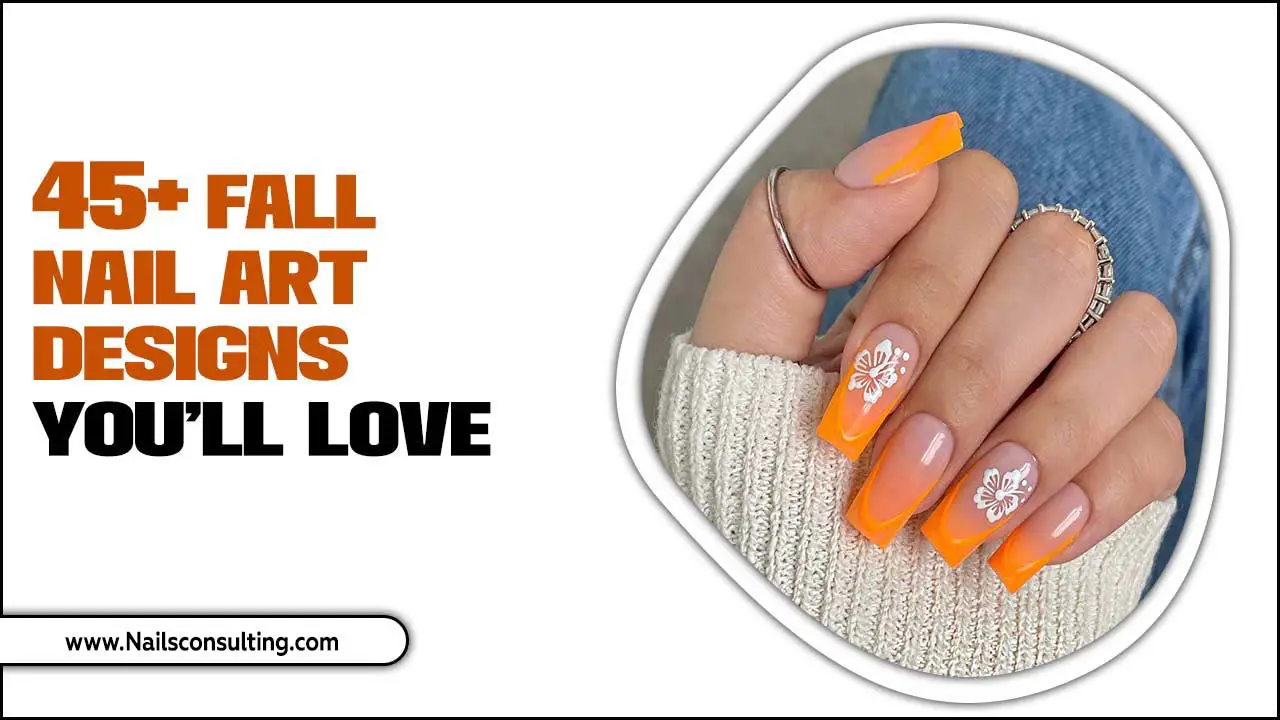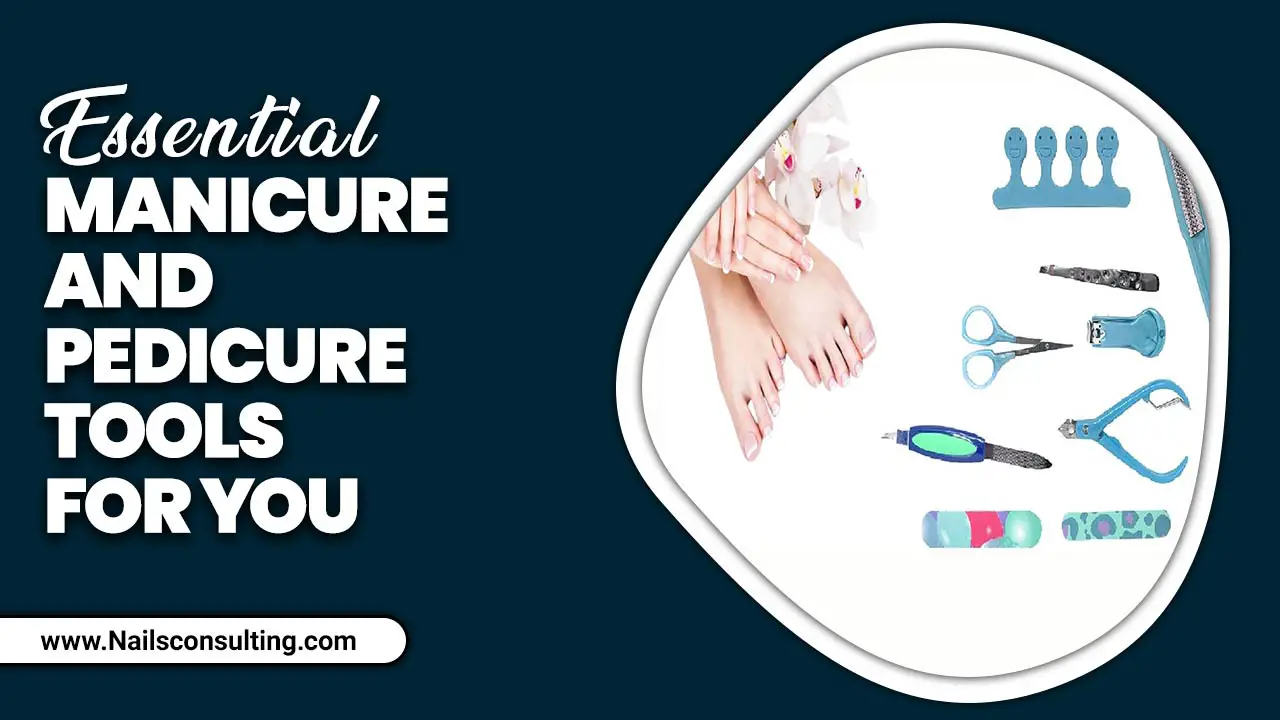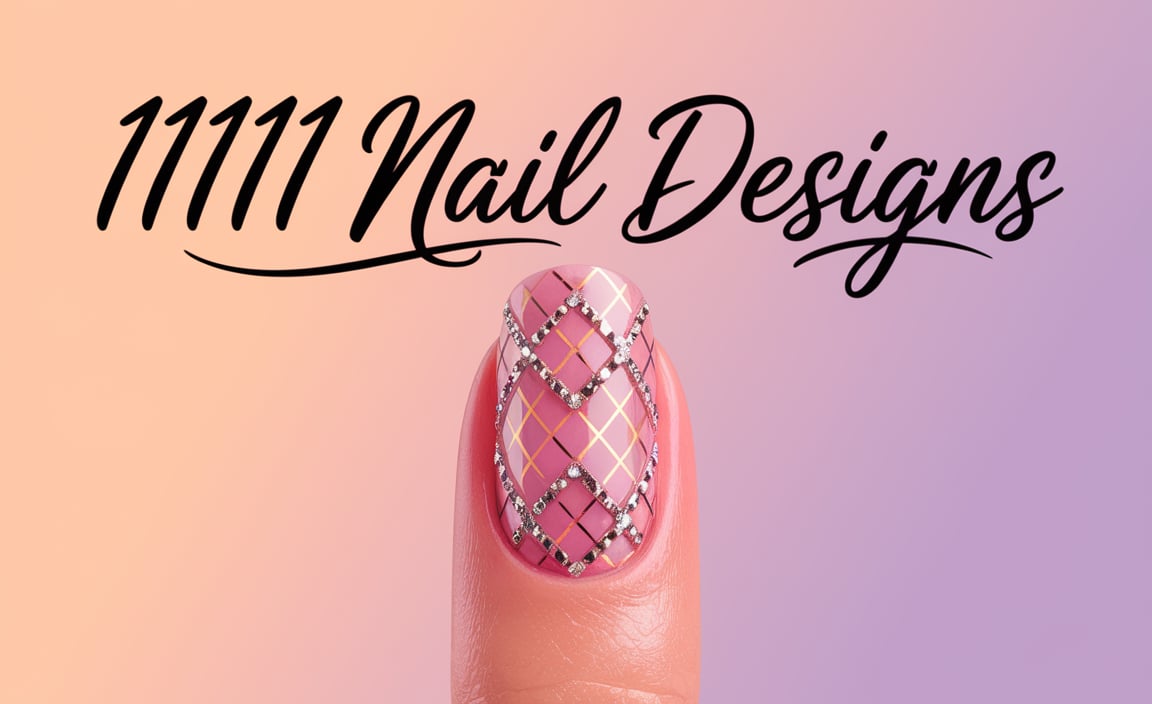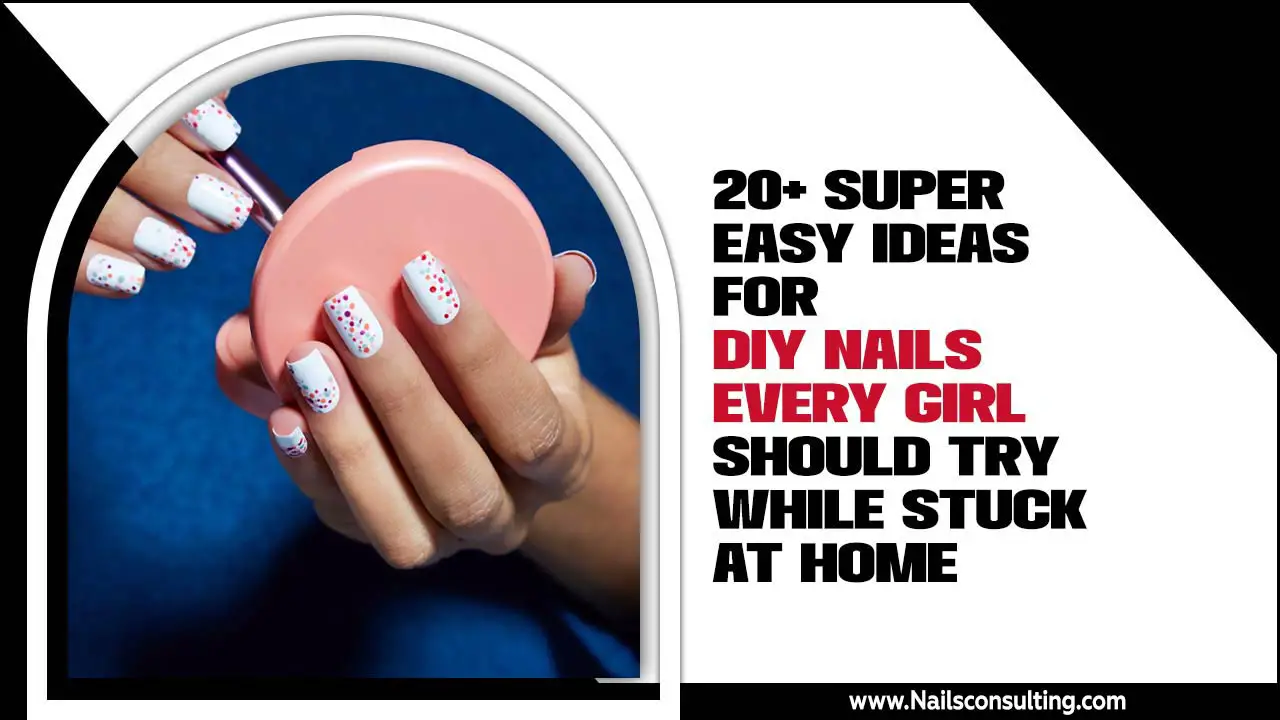Nail foil transfer designs are a brilliant and easy way to add stunning, professional-looking art to your nails in minutes. With a few simple steps and the right materials, you can achieve eye-catching, salon-quality manicures at home, transforming your nails into tiny canvases of creativity.
Ever feel like your nails are missing that extra sparkle? We’ve all been there, staring at our plain polish and wishing for something more. Maybe you’ve seen those gorgeous, intricate nail designs online and thought, “There’s no way I can do that!” Well, I’m here to tell you that you absolutely can! Nail foil transfer designs are a total game-changer for anyone who loves beautiful nails but doesn’t have hours to spend or mad artistic skills. They’re like magic for your fingertips, offering a shortcut to jaw-dropping looks. Get ready to discover how simple and fun creating stunning nail art can be, with results that look professionally done. Let’s dive in and unlock your inner nail artist!
Decoding Nail Foil Transfer Designs: Your New Go-To for Gorgeous Nails
Nail foil transfer designs, also known as nail foils or transfer foils, are a type of colorful, often holographic or metallic film that you can press onto your nails to create instant, captivating designs. Think of them as tiny, movable decals with a wow factor. They’re perfect for adding a pop of metallic shine, intricate patterns, or even full nail coverage with minimal effort. Whether you’re a total beginner or looking to elevate your at-home manicure, nail foils are a fantastic option for achieving salon-quality results without the salon price tag or the need for advanced artistic talent. They’re incredibly versatile and can complement any outfit or occasion.
Why Are Nail Foil Transfer Designs So Beloved?
Nail foils have skyrocketed in popularity for some very good reasons. They offer a unique blend of convenience, visual impact, and affordability that’s hard to beat. Here’s why they’re a favorite among nail art enthusiasts:
- Speedy Application: You can create stunning designs in a fraction of the time it takes for traditional nail art painting.
- Wow-Factor Designs: The holographic, metallic, and iridescent finishes are incredibly eye-catching and give a professional, salon-like appearance.
- Beginner-Friendly: They’re remarkably easy to use, even if you’ve never done nail art before. No steady hand required!
- Versatility: You can cover an entire nail, use small pieces for accents, or create abstract patterns.
- Cost-Effective: A little foil goes a long way, making it an affordable way to experiment with different looks.
- Durability: When applied correctly, nail foils can last as long as your regular nail polish or gel manicure.
What You’ll Need: Your Nail Foil Transfer Toolkit
Getting started with nail foil designs is super simple! You won’t need a whole arsenal of brushes or complicated tools. Here’s a quick rundown of what you’ll need:
- Nail Foil: This is the star of the show! Foils come in countless colors, patterns, and finishes – from holographic rainbows to subtle metallics and fun prints.
- Nail Foil Adhesive (or Foil Glue): This special glue is formulated to create a tacky surface that your foil will stick to. Some nail polishes can also act as an adhesive, especially darker, richer formulas.
- Base Coat: To protect your natural nails and ensure a smooth canvas.
- Top Coat: To seal your design and add shine and longevity.
- Tweezers (Optional): For precise placement of foil pieces, especially smaller ones.
- Cuticle Pusher or Orangewood Stick: To gently press down the foil and ensure it adheres smoothly.
- Rubbing Alcohol or Nail Polish Remover: For cleaning the nail surface before application.
- Your Favorite Nail Polish (if not using solid color foils): The color underneath your foil can influence the final look.
Understanding Nail Foil Types
Nail foils aren’t one-size-fits-all. They come in a few main varieties, each offering a different effect:
| Type of Foil | Description | Best For | Visual Effect |
|---|---|---|---|
| Transfer Foils | These are the most common type. They have a colored or patterned side and a thin, metallic backing. You press the colored side onto the adhesive. | Creating full nail designs, accents, abstract patterns. | Vibrant colors, metallic sheens, holographic effects. |
| Peelable/Press-On Foils | These are usually pre-cut into nail shapes and have their own adhesive. You simply peel them off the backing and apply them directly to the nail. | Quick full nail coverage, simple manicures. | Smooth, uniform color or pattern; some offer metallic finishes. |
| Crushed/Mosaic Foils | These are small, irregular pieces of foil that you apply like glitter. | Creating textured, mosaic-like designs, adding sparkle. | Irregular, fragmented shimmer and color. |
Step-by-Step Guide: Crafting Your Own Nail Foil Masterpieces
Ready to get started? Follow these simple steps for gorgeous nail foil transfer designs. It’s easier than you think!
Step 1: Prep Your Nails
A good manicure always starts with proper prep. This ensures your foil design looks smooth and lasts longer. It’s like preparing a canvas before painting!
- Clean Your Nails: Start by removing any old polish. Wash your hands with soap and water, and make sure your nails are completely dry.
- Shape Your Nails: File your nails to your desired shape and length.
- Push Back Cuticles: Gently push back your cuticles using a cuticle pusher or orangewood stick. This gives you a clean surface area to work with.
- Buff (Optional): Lightly buff the surface of your nails to create a smooth surface for polish and adhesive to adhere to. Avoid over-buffing!
- Wipe Down: Use rubbing alcohol or nail polish remover on a lint-free wipe to remove any oils or dust from your nails. This is crucial for good adhesion.
Step 2: Apply Your Base Color (or Skip It!)
This step is where you decide on the background for your foil. You have a few options:
- Solid Base Color: Apply one or two coats of your favorite nail polish. Any color will work, but darker colors often make foil designs pop more. Let it dry completely until it’s tack-free but not fully cured (this keeps it slightly sticky for some foil types).
- Clear Base Coat: Apply a clear base coat or a clear builder gel. This is essential when you’re using a specific foil glue or adhesive.
- Skip It: If you’re using a solid-color transfer foil and want it to be the only color, you can skip the base polish and go straight to the foil adhesive.
Pro Tip: If using regular nail polish as your base, wait until it’s mostly dry but still has a slight tackiness to it before moving to the next step. This “tacky” stage is key for some applications. If it’s fully dry and hard, the foil won’t stick well.
Step 3: Apply the Nail Foil Adhesive
This is the sticky secret to successful foil transfers!
Method A: Using Foil Glue/Adhesive
- Apply a thin, even layer of your specialized nail foil adhesive over the entire nail, or just the area where you want the foil to adhere.
- Crucial step: Let the adhesive dry until it becomes clear and tacky. This usually takes 30 seconds to a couple of minutes, depending on the product. It shouldn’t look wet anymore, but it should feel slightly sticky when you gently touch it with something non-porous (like the back of a pair of tweezers). The drying time is key – too wet and the foil will smudge, too dry and it won’t stick.
Method B: Using Regular Nail Polish (for certain foils)
- Apply your base color polish.
- Wait until the polish is almost dry but still has a definite tackiness. You can test this by gently touching it with your finger or a clean tool.
- Some foils work best directly on a tacky polish surface without needing extra glue. This method works well if your foil is designed for it or if you’re aiming for a more subtle transfer.
Step 4: Apply the Nail Foil!
Now for the fun part – transferring the design!
- Cut Your Foil: Cut a piece of nail foil a little larger than your nail. You can use one solid piece for a full coverage design or smaller, irregular pieces for accent art.
- Place the Foil: Place the foil onto your tacky nail surface, colored side UP (this is important!), sticky side DOWN.
- Press and Smooth: Gently press down the foil with your fingertip, a cuticle pusher, or an orangewood stick. Work from the center outwards to smooth out any bubbles and ensure full contact. You want to create a firm, even press all over.
- Peel Away the Backing: Carefully and slowly peel off the clear plastic backing or the foil’s metallic layer. The design should now be transferred to your nail. If some parts didn’t transfer, don’t worry! You can reposition the foil and press down again, or try to fill in gaps with a bit more adhesive and foil.
Troubleshooting Tip: If the foil isn’t transferring well, check your adhesive’s tackiness. It might need more drying time, or you might need to reapply it. Make sure you’re placing the foil correctly (colored side up) and pressing evenly.
Step 5: Seal Your Design
To protect your beautiful new nail art and give it a lasting shine, you need to seal it.
- Apply Top Coat: Apply a thin, even layer of your favorite clear top coat over the entire nail, making sure to cap the free edge (swipe a little top coat across the very tip of your nail).
- Be Gentle: When applying the top coat, don’t go over your foil design too many times, especially with a brush-heavy hand, as it can sometimes smudge the design if the adhesive or polish underneath isn’t fully cured. A few smooth strokes are best.
- Let it Dry: Allow your top coat to dry completely.
Step 6: Finishing Touches
Once your top coat is dry, you’re done! For a super clean finish, you can gently remove any stray foil bits or polish from around your cuticles with a small brush dipped in nail polish remover.
Creative Ideas and Techniques with Nail Foil Transfer Designs
Nail foils are incredibly versatile! Don’t be afraid to experiment. Here are some ideas to inspire your creativity:
- Full Nail Coverage: Use a large piece of foil to cover the entire nail for a bold, holographic, or metallic statement.
- Accent Nails: Apply foil to just one or two nails for a subtle yet striking touch.
- French Tips: Cut small strips of foil and apply them to the tips of your nails for a metallic French manicure.
- Abstract Art: Tear or cut foil into random shapes and press them onto a tacky base for a modern, abstract look.
- Ombre Effect: Layer different colored foils or apply foil over a gradient base color.
- Stamping Combinations: Use foil for a specific element of a stamped design, like adding a metallic swirl to a stamped floral.
- Using Different Bases: Experiment with matte top coats for a unique, velvety finish over your foil design.
Using Nail Foils with Gel Polish
Nail foils work beautifully with gel polish, offering extended wear and a high-gloss finish. The process is very similar, with a few key differences:
- Prep your nails and apply your gel base coat.
- Apply your colored gel polish and cure it under a UV/LED lamp. For full coverage foils, you might only need one layer.
- Instead of regular foil glue, you’ll use a specific “gel foil adhesive” or simply apply the foil to a sticky layer of a non-wipe gel top coat or a specially formulated gel adhesive.
- If using a non-wipe gel top coat, apply a thin layer, then immediately place your foil onto the uncured sticky surface. Press firmly, then peel.
- If using a gel foil adhesive, apply it and cure it according to its instructions before applying the foil.
- Once the foil is transferred, apply a gel top coat to seal the design and cure under the lamp. Remember to cap your edges!
Resource: For more information on gel polish application and curing times, you can refer to resources from reputable nail education sites. Understanding your lamp’s power is key! According to the U.S. Food & Drug Administration (FDA), UV lamps emit radiation, so safe usage as per manufacturer instructions is important for both skin and nail health during curing.
Troubleshooting Common Nail Foil Issues
Even the pros run into a snag now and then! Here are solutions to common foil transfer problems:
Issue: Foil Isn’t Transferring Properly
- Cause: Adhesive not tacky enough or too dry.
- Solution: Ensure your foil glue or polish has reached the optimal tacky stage. If it’s too dry, reapply and wait a bit longer. Make sure you’re pressing firmly and evenly.
Issue: Smudged or Incomplete Design
- Cause: Foil applied too soon, or not pressed firmly enough.
- Solution: Let the adhesive dry to the proper tackiness. When applying the foil, use consistent pressure. You can also try applying a bit more adhesive to the patchy areas and reapply a small piece of foil.
Issue: Foil Peeling Up at the Edges
Cause: Not enough adhesive near the cuticle or tip, or top coat applied too aggressively.
Solution: Ensure a thin layer of adhesive covers the entire nail, especially close to the cuticles and the free edge. When applying the top coat, use gentle, smooth strokes and cap the edge of the nail.
Issue: Bubbles in the Foil
Cause: Applying foil to a wet surface, or not pressing it down smoothly.
Solution: Make sure your adhesive is tacky, not wet. Press the foil down firmly from the center outwards to push out any air bubbles before peeling.
Frequently Asked Questions About Nail Foil Transfer Designs
Q1: How long do nail foil transfer designs typically last?
A1: When applied correctly with a good adhesive and sealed with a quality top coat (especially a gel top coat for gel manicures), nail foil designs can last anywhere from 5 days to 2 weeks, similar to regular or gel polish.
Q2: Can I use regular nail polish as an adhesive for nail foils?
A2: Sometimes! Certain types of foils, especially those designed for this purpose, can adhere to the tacky surface of regular nail polish once it’s mostly dry but not fully cured. However, for best results and maximum wear, a dedicated foil adhesive is recommended.
Q3: Do I need a special UV/LED lamp for nail foils?
A3: You only need a UV/LED lamp if you are using gel polish or a gel foil system. If you’re using regular nail polish and foil adhesive, no lamp is required; air-drying is sufficient.
Q4: How do I remove nail foil transfer designs?
A4: For regular polish manicures, remove foils with regular nail polish remover. For gel manicures, you’ll need to use a gel remover (typically acetone-based) and follow the standard gel removal process, often involving soaking or filing.
Q5: Can I reuse nail foils?
A5: Typically, no. Once the design is transferred, the foil itself is usually left behind on the nail, and the transferred pattern is a permanent part of the manicure until removed. Small scraps might be salvageable for tiny accents, but the main piece is for single use.
Q6: What’s the difference between transfer foils and nail stickers?
A6: Transfer foils are thin films that adhere to a special glue or tacky polish surface, creating a smooth, often metallic or holographic finish. Nail stickers (decals) are






